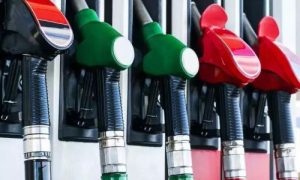Ethanol blending save ₹24,300 crore foreign exchange, 509 crore litres petrol in 2022-23, says Hardeep Puri

Blending of ethanol into petrol has resulted in savings of over ₹24,300 crore of foreign exchange in the supply year 2022-23, said Union Petroleum Minister Hardeep Puri on Wednesday.
Public sector oil marketing companies (OMCs) have saved about 509 crore litres of petrol on account of ethanol blending during the ethanol supply year 2022-23, besides leading to an expeditious payment of about ₹19,300 crore to farmers.
It is estimated that a net reduction of net carbon dioxide to the tune of 108 lakh metric tonnes was seen during the period.
Notably, as recently as last week, oil marketing companies in the public sector announced an incentive of ₹6.87 per litre for the production of ethanol from C-heavy molasses.
The oil companies believe this incentive would maximise ethanol production from the C molasses route and improve the overall availability of ethanol for the ethanol blended petrol programme. C-molasses is a by-product of sugar factories and its use for ethanol production is an effective way to promote a green economy.
India has already rolled out 20 per cent blended fuel, though in a phased manner, in April 2023 and widespread availability is expected in days to come.
The government is ambitious of attaining 20 per cent ethanol-blended petrol by 2024-25 and 30 per cent by 2029-30. The government has advanced the target of E20 fuel from 2030 to 2025.
E20 blending in petrol was introduced by the Centre to reduce the country’s oil import cost, energy security, lower carbon emissions and better air quality.
The number of retail outlets retailing E20 fuel is now more than 9,300 and will cover the entire country by 2025, Puri said today.
The Food Ministry in early December directed sugar mills not to use cane juice or syrup to produce ethanol.
In a U-turn, the central government in mid-December allowed the utilisation of juice as well as B-heavy molasses to produce ethanol but capped the diversion of sugar at 17 lakh tonnes for the current marketing season.
Notably, at the COP26 summit in Glasgow in 2021, Prime Minister Narendra Modi committed to an ambitious five-part “Panchamrit” pledge, including reaching 500 GW of non-fossil electricity capacity, generating half of all energy requirements from renewables, and reducing emissions by 1 billion metric tonnes by 2030.
India also aims to reduce the emissions intensity of GDP by 45 per cent. Finally, India commits to net-zero emissions by 2070.
The minister also noted that the growth-energy correlation is evident in India as it is now the world’s 3rd largest energy consumer, 3rd largest consumer of oil, 3rd Largest LPG consumer, 4th largest LNG importer, 4thlargest refiner and 4th largest automobile market in the world.
Underscoring that India has taken a global leadership role in the Biofuels supply chain with the launch of the Global Biofuels Alliance in September 2023, the minister said that India has been successful in promoting GBA as a pivotal path in the sustainability journey at COP 28 held in December 2023.
During the conference, Hardeep Singh also mentioned about government’s steps to increase share of Natural gas from the present 6.3 percent to 15 percebt in the primary energy mix, saying there will be an investment of $67 Billion in Natural Gas infrastructure in the next 5-6 years.
“This will translate into increase in the gas consumption by over three-fold, from the present level of around 155 MMSCMD (Million Metric Standard Cubic Meters per Day)to over 500 MMSCMD by the year 2030,” the minister noted.

















